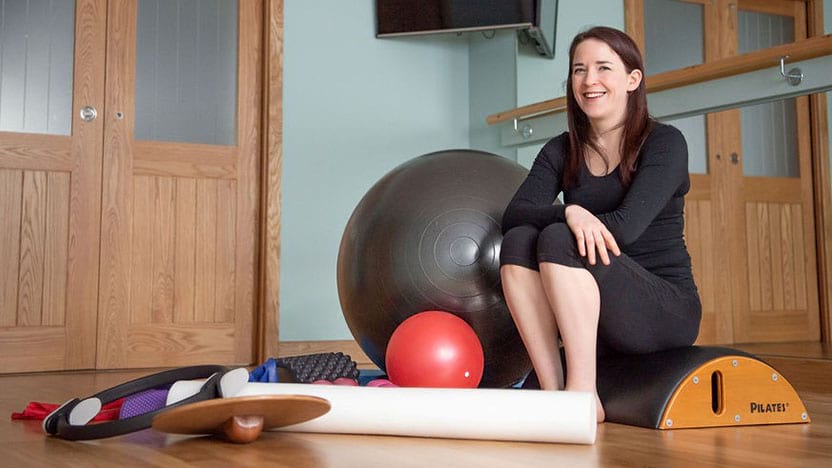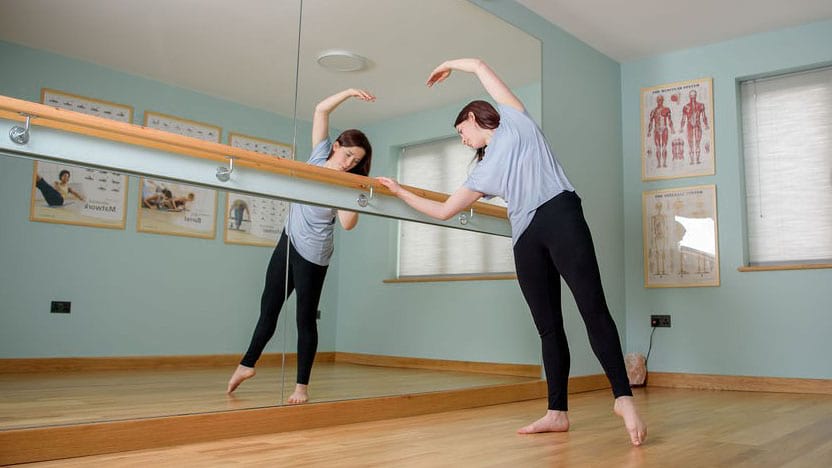
Emmeline Kemp decided to enroll in the Merrithew® Fascial Movement Foundation Course after seeing the positive results that her limited knowledge of fascia was having on her clients.
She’d picked up bits and pieces about fascia from some of the other Merrithew small equipment workshops she’d attended, but she was keen to learn more, so she signed up for the full course at the Merrithew Mindful Movement Symposium in the UK last year.
“This course is for those instructors who want to move beyond the ‘what’ and ‘how’ of mindful movement. If you want to learn why you are teaching what you teach, then take this course. I feel like this is only the beginning of a new phase of my study of mindful movement and teaching this to my clients,” says Emmeline, a STOTT PILATES® Certified Instructor and Total Barre® Qualified Instructor.
The course will be offered at the New York Symposium from March 6-8.
Getting to learn from two leaders in the field, Merrithew Master Instructor Trainers PJ O’Clair and Kim Kraushar, was an additional draw, Emmeline says.
“The course was really thorough and informative, and they gave us lots of additional help and resources to continue our education after the course was over,” she says.
“I learned how movement can change genetic expression; how important breath is to the support and creation of hydraulic amplification; and that fascia is way more complex and fascinating than just being a ‘connective tissue.’”

She’s since introduced many of those concepts to her group classes and private clients at her studio, Green Room Health, in Danbury, England.
“The Bounce Variable is particularly popular in my Pilates and barre classes as it is something totally new to clients. It is challenging and takes some focus, but we do get lots of giggles too as I play funky music to inspire and sustain the movements,” she says.
In her barre classes, she gets clients to practice a leg adductor bounce and an arm bounce with the Mini Stability Ball™ or Fitness Circle®. “This has improved my clients’ strength and quality of movement for dance-based programs. These are both invigorating exercises and very popular with my older clients – my oldest client is 75-years-young!”

One of the most rewarding results to date has been the progress she’s seen in a client who had adhesions from breast cancer radiotherapy 10 years ago.
“She previously suffered from a reoccurring cramping sensation in her side related to the radiotherapy, but now her confidence in being able to move without pain has increased in part because of our fascial movement work.”
To assist in her recovery, Emmeline’s used exercises from all four Fascial Movement Variables, including: the loaded and unloaded arm bounce exercises from the Bounce Variable; rib cage breathing versus belly breathing from the Sense Variable; bilateral and lateral reaches overhead with the Twist Ball™ from the Expand Variable; and rolling the sides and shoulders using the Mini Stability Ball or Foam Roller™ from the Hydrate Variable.
“The Merrithew Fascial Movement Foundation Course has given me more tools to use in the studio with all of my clients, but especially with my rehab clients. I want them to be able to take their learning home with them, and many of the fascial movement exercises can easily be incorporated into their daily routines without too much preparation— while you wait for dinner to finish cooking, or while you’re running a bath,” she says.
The exercises are also suitable for diverse clients, from those wanting to feel reinvigorated after a period of stillness, to those who just want to gently reintroduce themselves to movement that keeps them calm, relaxed and stress-free.
“Now I have proven methods from the Merrithew Fascial Movement Foundation Course to meet all of their requirements,” she says.
Join us at the New York Symposium this March for the Fascial Movement Foundation Course with Kim Kraushar.